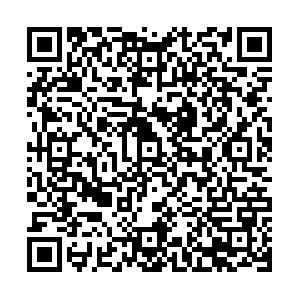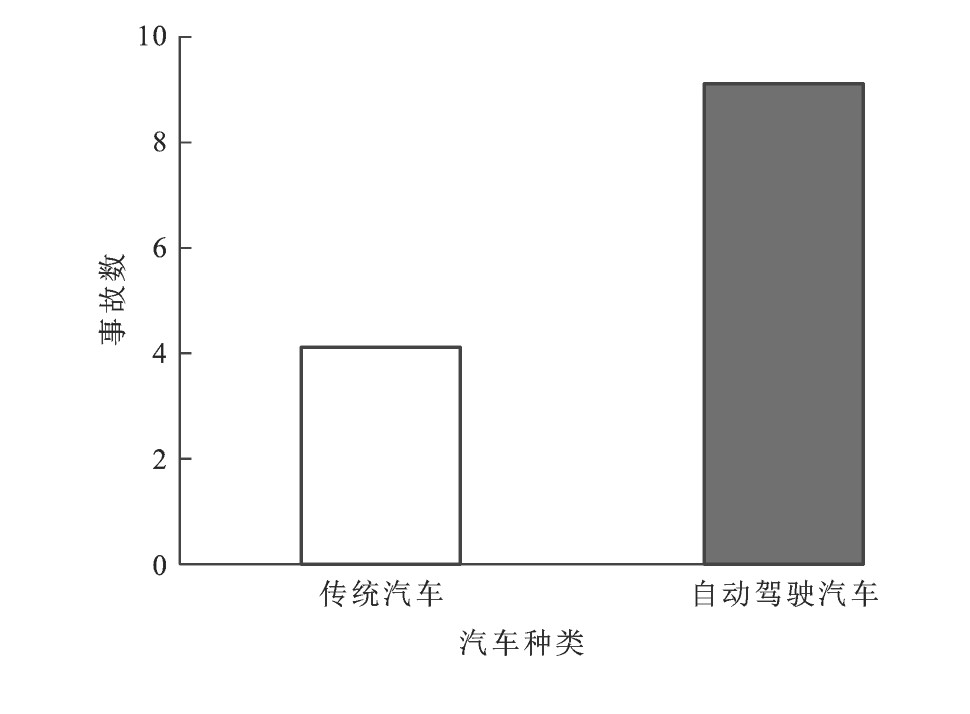-
摘要: 根据智能汽车技术发展特点和趋势提出了人机共驾的概念; 从切换的发起者、强制性与计划性三方面论述了人机共驾智能汽车控制权切换的分类方法, 分析了广义和狭义2种分类的特点和应用范围; 从驾驶人的认知、驾驶负荷、反应力等方面剖析了人机共驾中人因的特性及其对控制权切换安全性的影响, 总结了控制权切换的试验研究方法和人机交互形式, 指出了控制权切换安全性研究存在的问题和未来发展方向。分析结果表明: 人机共驾智能汽车的应用范围是L2~L3级自动驾驶, 特点是人与系统彼此协同完成动态的驾驶任务; 由系统主动发起、驾驶人被动接管的控制权切换情形与安全性更被业内关注; 驾驶人能有效地对当前驾驶状态进行认知和评估, 进而接管车辆操作, 并最终规避风险, 是保证控制权切换安全性的关键; 人因是影响控制权安全平稳切换的重要因素, 主要表现为认知水平偏低, 切换前后驾驶负荷阶跃式突变, 次任务的影响机理不明确, 反应力随切换场景的不同而差异显著等; 该领域的主要研究还包括接管绩效的评价, 切换时机与人机交互方式的优化以及试验手段的提升等。Abstract: On the basis of the features and tendencies of intelligent vehicle technology, the concept of human-computer driving was proposed.The taxonomy methods of the control switch of intelligent vehicles were analyzed in terms of the initiator, urgency, and schedule.The features and applications of two taxonomy methods were discussed in a generalized and narrow sense.The characteristics of human factors in the field of human-computer driving and its influence on the safety of control switch were analyzed in terms of the driver awareness, workload, and response.The experimental methods and human-machine interaction forms of control switch weresummarized, and the problems and further developments of the safety were pointed.Analysis result indicates that the application scope of human-computer driving intelligent vehicle is L2-L3 automated driving, and the characteristic is the cooperation of human and computer to complete the dynamic driving tasks.The safety of the control switch situations, which is initiated by the system and passively taken over by the driver, has been given special attention.The key to ensure the safety of control switch is that the driver can effectively recognize and evaluate the current driving state, take over the vehicle operation, and finally avoid the potential hazard.Human factors have a severe impact on the safety and stability of the control switch, mainly manifested as the loss of situation awareness, sudden change of workload before and after handover, uncertainty of the influence of secondary tasks, and significant differences of driver response in different scenarios.The main research in this field also include the evaluation of taking over performance, optimization of switching timing and human-machine interaction, and the improvement of experimental methods.
-
Key words:
- intelligent transportation /
- traffic safety /
- human-computer driving /
- control switch /
- driver behavior /
- human factor
-
表 1 SAE J3016标准中自动驾驶级别
Table 1. Automated driving levels in SAE J3016standard

表 2 控制权切换试验中的典型关键事件
Table 2. Typical key events in experiments of control switch

-
[1] VAN BRUMMELEN J, O'BRIEN M, GRUYER D, et al. Autonomous vehicle perception: the technology of today and tomorrow[J]. Transportation Research Part C: Emerging Technologies, 2018, 89: 384-406. doi: 10.1016/j.trc.2018.02.012 [2] BECKER F, AXHAUSEN K W. Literature review on surveys investigating the acceptance of automated vehicles[J]. Transportation, 2017, 44 (6): 1293-1306. doi: 10.1007/s11116-017-9808-9 [3] Google. Google self-driving car testing report on disengagements of autonomous mode[R]. Mountain View: Google, 2016. [4] SCHOETTLE B, SIVAK M. A preliminary analysis of realworld crashes involving self-driving vehicles[R]. Ann Arbor: University of Michigan Transportation Research Institute, 2015. [5] SCHOETTLE B, SIVAK M. Public opinion about self-driving vehicles in China, India, Japan, the U. S., the U. K., and Australia[R]. Ann Arbor: University of Michigan Transportation Research Institute, 2014. [6] GASSER T M, WESTHOFF D. BASt-study: definitions of automation and legal issues in Germany[R]. Bergisch Gladbach: Federal Highway Research Institute, 2012. [7] National Highway Traffic Safety Administration. Preliminary statement of policy concerning automated vehicles[R]. Washington DC: National Highway Traffic Safety Administration, 2013. [8] SAE International. Surface vehicle information report: taxonomy and definitions for terms related to on-road motor vehicle automated driving systems[R]. New York: SAE International, 2014. [9] National Highway Traffic Safety Administration. Federal automated vehicles policy: accelerating the next revolution in roadway safety[R]. Washington DC: National Highway Traffic Safety Administration, 2016. [10] LU Zhen-ji, HAPPEE R, CABRALL C D D, et al. Human factors of transitions in automated driving: a general framework and literature survey[J]. Transportation Research Part F: Traffic Psychology and Behaviour, 2016, 43: 183-198. doi: 10.1016/j.trf.2016.10.007 [11] MCCALL R, MCGEE F, MESCHTSCHERJAKOV A, et al. Towards a taxonomy of autonomous vehicle handover situations[C]//ACM. 8th International Conference on Automotive User Interfaces and Interactive Vehicular Applications. New York: ACM, 2016: 193-200. [12] MERAT N, DE WAARD D. Human factors implications of vehicle automation: current understanding and future directions[J]. Transportation Research Part F: Traffic Psychology and Behaviour, 2014, 27: 193-195. doi: 10.1016/j.trf.2014.11.002 [13] DE WINTER J C F, HAPPEE R, MARTENS M H, et al. Effects of adaptive cruise control and highly automated driving on workload and situation awareness: a review of the empirical evidence[J]. Transportation Research Part F: Traffic Psychology and Behaviour, 2014, 27: 196-217. doi: 10.1016/j.trf.2014.06.016 [14] ONNASCH L, WICKENS C D, LI Hui-yang, et al. Human performance consequences of stages and levels of automation: an integrated meta-analysis[J]. Human Factors, 2014, 56 (3): 476-488. doi: 10.1177/0018720813501549 [15] CASNER S M, HUTCHINS E L, NORMAN D. The challenges of partially automated driving[J]. Communications of the ACM, 2016, 59 (5): 70-77. doi: 10.1145/2830565 [16] GOLESTAN K, SOUA R, KARRAY F, et al. Situation awareness within the context of connected cars: a comprehensive review and recent trends[J]. Information Fusion, 2016, 29: 68-83. doi: 10.1016/j.inffus.2015.08.001 [17] XU Zhi-gang, ZHANG Kai-fan, MIN Hai-gen, et al. What drives people to accept autonomous vehicles?findings from a field experiment[J]. Transportation Research Part C: Emerging Technology, 2018, 95: 320-334. doi: 10.1016/j.trc.2018.07.024 [18] CARSTEN O, LAI F C H, BARNARD Y, et al. Control task substitution in semiautomated driving: does it matter what aspects are automated?[J]. Human Factors, 2012, 54 (5): 747-761. doi: 10.1177/0018720812460246 [19] MERAT N, JAMSON A H, LAI F C, et al. Transition to manual: Driver behaviour when resuming control from a highly automated vehicle[J]. Transportation Research Part F: Traffic Psychology and Behaviour, 2014, 27: 274-282. doi: 10.1016/j.trf.2014.09.005 [20] YERKES R M, DODSON J D. The relation of strength of stimulus to rapidity of habit-formation[J]. Journal of Comparative Neurology and Psychology, 1908, 18 (5): 459-482. doi: 10.1002/cne.920180503 [21] NILSSON J, STRAND N, FALCONE P, et al. Driver performance in the presence of adaptive cruise control related failures: implications for safety analysis and fault tolerance[C]//IEEE. 2013 43rd Annual IEEE/IFIP Conference on Dependable Systems and Networks Workshop. New York: IEEE, 2013: 1-10. [22] RIZZO L, DONDIO P, DELANY S J, et al. Modeling mental workload via rule-based expert system: a comparison with NASA-TLX and workload profile[C]//Springer. 12th IFIP WG 12.5International Conference and Workshops on Artificial Intelligence Applications and Innovations. Berlin: Springer, 2016: 215-229. [23] BIBBY K S, MARGULIES F, RIJNSDORP J E, et al. Man's role in control systems[J]. IFAC Proceedings Volumes, 1975, 8 (1): 664-683. doi: 10.1016/S1474-6670(17)67612-2 [24] HANCOCK P A, KRUEGER G P. Hours of boredom, moments of terror: temporal desynchrony in military and security force operations[R]. Washington DC: National Defense University, 2010. [25] WIENER E L. Human factors of advanced technology (glass cockpit) transport aircraft[R]. Washington DC: NASA, 1989. [26] TRIMBLE T E, BISHOP T, MORGAN J F. Human factors evaluation of level 2and level 3automated driving concepts[R]. Washington DC: National Highway Traflc Safety Administration, 2014. [27] YOUNG M S, STANTON N A. Malleable attentional resources theory: a new explanation for the effects of mental underload on performance[J]. Human Factors, 2002, 44 (3): 365-375. doi: 10.1518/0018720024497709 [28] LOUW T, MERAT N. Are you in the loop?using gaze dispersion to understand driver visual attention during vehicle automation[J]. Transportation Research Part C: Emerging Technologies, 2017, 76: 35-50. doi: 10.1016/j.trc.2017.01.001 [29] NEUBAUER C, MATTHEWS G, SAXBY D. The effects of cell phone use and automation on driver performance and subjective state in simulated driving[C]//HFES. Proceedings of the Human Factors and Ergonomics Society 56th Annual Meeting. New York: HFES, 2012: 1987-1991. [30] PICCININI G F B, RODRIGUES C M, LEITAO M, et al. Reaction to a critical situation during driving with adaptive cruise control for users and non-users of the system[J]. Safety Science, 2015, 72: 116-126. doi: 10.1016/j.ssci.2014.09.008 [31] GOLD C, DAMBCK D, LORENZ L, et al. "Take over!"how long does it take to get the driver back into the loop?[C]//HFES. Proceedings of the Human Factors and Ergonomics Society 57th Annual Meeting. New York: HFES, 2013: 1938-1942. [32] NAUJOKS F, PURUCKER C, NEUKUM A, et al. Controllability of partially automated driving functions-does it matter whether drivers are allowed to take their hands off the steering wheel?[J]. Transportation Research Part F: Traffic Psychology and Behaviour, 2015, 35: 185-198. doi: 10.1016/j.trf.2015.10.022 [33] SAMUEL S, BOROWSKY A, ZILBERSTEIN S, et al. Minimum time to situation awareness in scenarios involving transfer of control from an automated driving suite[J]. Transportation Research Board, 2016 (2602): 115-120. [34] ZEEB K, BUCHNER A, SCHRAUF M. What determines the take-over time?an integrated model approach of driver take-over after automated driving[J]. Accident Analysis and Prevention, 2015, 78: 212-221. doi: 10.1016/j.aap.2015.02.023 [35] ERIKSSON A, STANTON N A. Takeover time in highly automated vehicles: noncritical transitions to and from manual control[J]. Human Factors, 2017, 59 (4): 689-705. doi: 10.1177/0018720816685832 [36] RUSSELL H E B, HARBOTT L K, NISKY I, et al. Motor learning affects car-to-driver handover in automated vehicles[J]. Science Robotics, 2016, 1: 1-9. [37] 闫学东, 李晓梦. 基于驾驶模拟实验的层级式驾驶行为安全模型研究综述[J]. 交通信息与安全, 2014, 32 (5): 1-6. https://www.cnki.com.cn/Article/CJFDTOTAL-JTJS201405002.htmYAN Xue-dong, LI Xiao-meng. A hierarchical driving performance assessment model for driving simulator-based studies[J]. Journal of Transport Information and Safety, 2014, 32 (5): 1-6. (in Chinese). https://www.cnki.com.cn/Article/CJFDTOTAL-JTJS201405002.htm [38] XIONG Zhi-tao, OLSTAM J. Orchestration of driving simulator scenarios based on dynamic actor preparation and automated action planning[J]. Transportation Research Part C: Emerging Technologies, 2015, 56: 120-131. doi: 10.1016/j.trc.2015.02.008 [39] NEUBAUER C, MATTHEWS G, LANGHEIM L, et al. Fatigue and voluntary utilization of automation in simulated driving[J]. Human Factors, 2012, 54 (5): 734-746. doi: 10.1177/0018720811423261 [40] NAUJOKS F, MAI C, NEUKUM A. The effect of urgency of take-over requests during highly automated driving under distraction conditions[C]//AHRAM T, KARWOWSKI W, MAREK T. Proceedings of the 5th International Conference on Applied Human Factors and Ergonomics AHFE 2014. Las Vegas: AHFE, 2014: 431-439. [41] MANCA L, DE WINTER J C F, HAPPEE R. Visual displays for automated driving: a survey[C]//ACM. Proceedings of the 7th International Conference on Automotive User Interfaces and Interactive Vehicular Applications. New York: ACM, 2015: 1-5. [42] LÖCKEN A, HEUTEN W, BOLL S. Supporting lane change decisions with ambient light[C]//ACM. Proceedings of the7th International Conference on Automotive User Interfaces and Interactive Vehicular Applications. New York: ACM, 2015: 204-211. [43] NEES M A, WALKER B N. Auditory displays for in-vehicle technologies[J]. Reviews of Human Factors and Ergonomics, 2011, 7: 58-99. [44] POLITIS I, BREWSTER S, POLLICK F. To beep or not to beep?comparing abstract versus language-based multimodal driver displays[C]//ACM. Proceedings of the 33rd Annual ACM Conference on Human Factors in Computing Systems. New York: ACM, 2015: 3971-3980. [45] BAZILINSKYY P, DE WINTER J. Auditory interfaces in automated driving: an international survey[J]. Peer J Computer Science, 2015, 2015 (8): 1-32. [46] PETERMEIJER S M, DE WINTER J C F, BENGLER K J. Vibrotactile displays: a survey with a view on highly automated driving[J]. IEEE Transactions on Intelligent Transportation Systems, 2016, 17 (4): 897-907. doi: 10.1109/TITS.2015.2494873 [47] SCHWALK M, KALOGERAKIS N, MAIER T. Driver support by a vibrotactile seat matrix—recognition, adequacy and workload of tactile patterns in take-over scenarios during automated driving[J]. Procedia Manufacturing, 2015, 3: 2466-2473. doi: 10.1016/j.promfg.2015.07.507 [48] TELPAZ A, RHINDRESS B, ZELMAN I, et al. Haptic seat for automated driving: preparing the driver to take control effectively[C]//ACM. Proceedings of the 7th International Conference on Automotive User Interfaces and Interactive Vehicular Applications. New York: ACM, 2015: 23-30. [49] VAN ERP J B F, TOET A, JANSSEN J B. Uni-, bi-and tri-modal warning signals: Effects of temporal parameters and sensory modality on perceived urgency[J]. Safety Science, 2015, 72: 1-8. doi: 10.1016/j.ssci.2014.07.022 [50] BAZILINSKYY P, KYRIAKIDIS M, DE WINTER J. An international crowdsourcing study into people's statements on fully automated driving[J]. Procedia Manufacturing, 2015, 3: 2534-2542. [51] GRAY R, HO C, SPENCE C. A comparison of different informative vibrotactile forward collision warnings: Does the warning need to be linked to the collision event?[J]. Plos One, 2014, 9 (1): 1-8. [52] NUKARINEN T, RANTALA J, FAROOQ A, et al. Delivering directional haptic cues through eyeglasses and a seat[C]//IEEE. 10th IEEE World Haptics Conference, New York: IEEE, 2015: 345-350. [53] PETERMEIJER S, BAZILINSKYY P, BENGLER K, et al. Take-over again: Investigating multimodal and directional TORs to get the driver back into the loop[J]. Applied Ergonomics, 2017, 62: 204-215. -





 下载:
下载:








